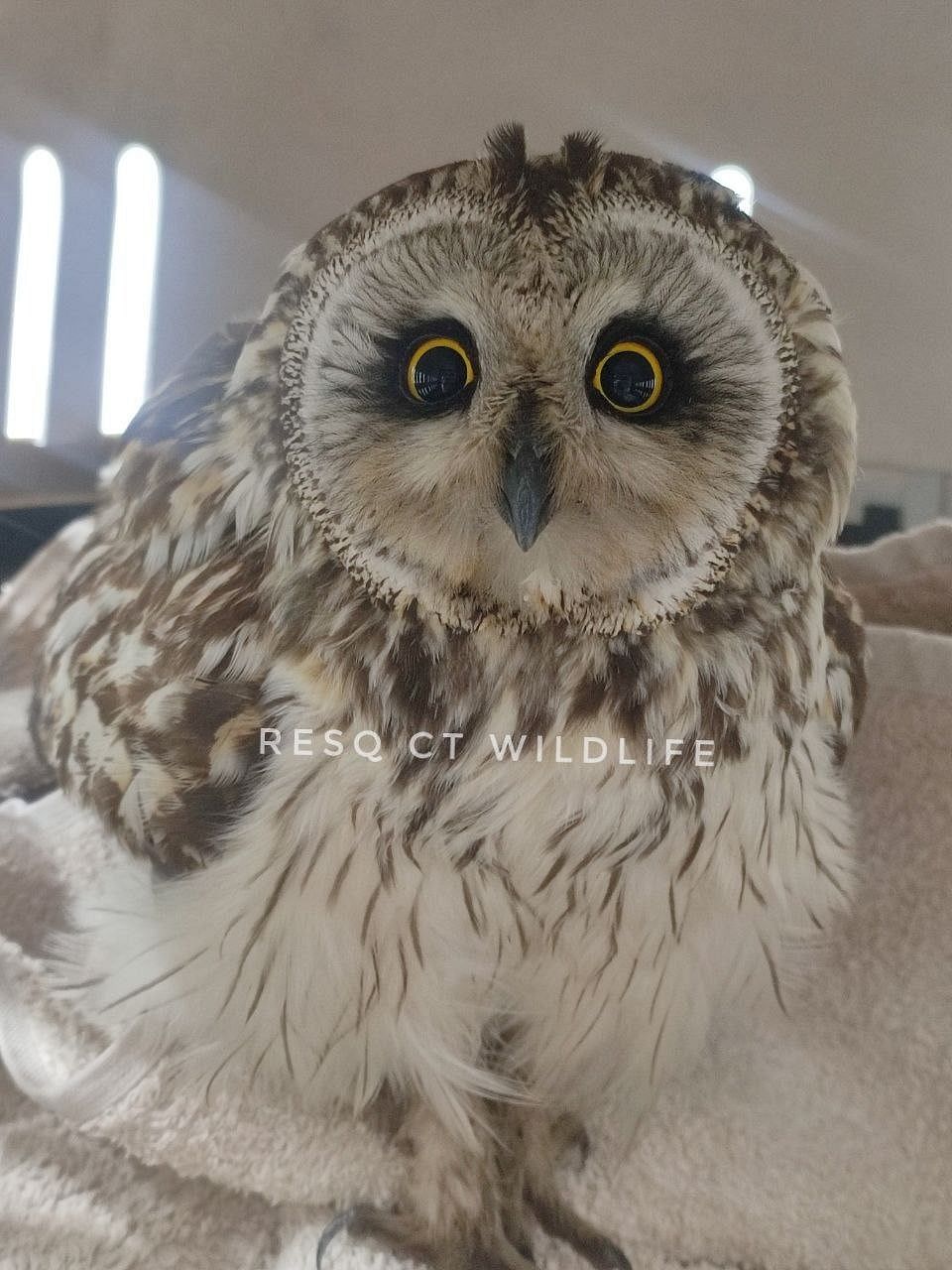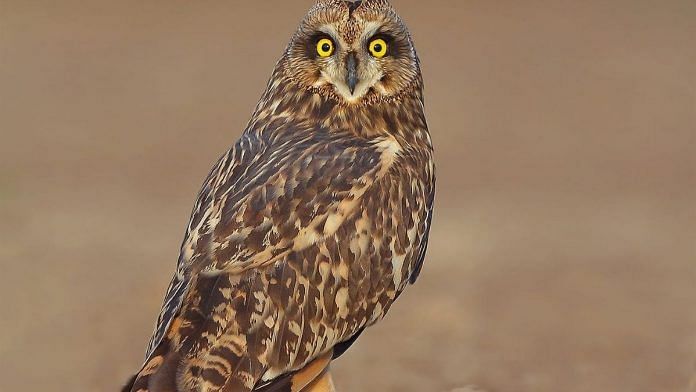The journey of a short-eared owl, a winter migrant, was interrupted by the heatwave in Maharashtra that began in the last week of March. It was found lying near a grassland in Pune. A wildlife enthusiast who was photographing birds in the area subsequently rescued the owl and rushed it to the RESQ Wildlife Treatment Transit Centre (TTC) in Bavdhan, Pune.
The owl was admitted in a severely dehydrated condition, unable to lift its head or fly.
“After two days of intensive treatment, rehydration and rehabilitation, it finally perked up and began perching,” said Dr Sushrut Shirbhate, veterinarian at RESQ Wildlife TTC.
“It was challenging to handle this owl species as they are very sensitive to handling — our rehabilitators had to create several enrichments to simulate a natural habitat in its housing enclosure to ensure it has the best chance to recover in captivity. On day three, it began taking short flights and self-feeding. It is now ready to be released and continue its flight path.”
Tuhin Satarkar, head rescuer of the RESQ team, while preparing the recovered owl for its transport and release, said, “It is satisfying to watch a wild animal make a complete recovery and get released back into a safe habitat. We’ve had over 100+ wild animals coming into the RESQ Wildlife Treatment Transit Centre since the heatwave hit us, but, together, wildlife rescuers and forest departments have been putting in constant efforts to rescue and revive as many animals as possible. Every single one counts.”
The short-eared owl (Asio flammeus) is a wide-ranging species found across all continents except in Antarctica and Australia. It is a winter migrant species in the Indian subcontinent and is one of the few owls known to be migratory.
“It migrates great distances over the sea, across continents. This species is known to migrate to India from Europe and is usually sighted here November to March. Their arrival and departure times have possibly been extended due to climatic changes we are experiencing,” said Anuj Khare, member of the Maharashtra State Wildlife Board and an avid birder.
Mihir Godbole, founder of The Grasslands Trust, said, “This bird comes to India to escape the harsh winter months in Europe, where it is a resident. In India, they are commonly seen roosting in the grasslands and prefer open, treeless areas. They are well suited to live in flat lands because of their rodent hunting and breeding habits.”

Also read: Why exotic snakehead fish is under threat — people want them as aquarium pets, 6x rise in trade
‘Un-owl-like birds’
Behaviourally, the short-eared owl is very ‘un-owl’ like. It flies almost like a moth, with irregular slow flaps, and is active during the day. It is considered a medium-sized owl that has very characteristic small tufts for ears on top of its head.
Its ears are clearly visible and upright when the bird is alarmed or disturbed. To successfully breed, male short-eared owls are known to perform a dance in the sky to attract the females — the routine includes songs and aerial acrobatics — both during the day and night.
Once paired, these birds are known to be monogamous, at least for the breeding season. After the eggs are laid, generally on the ground, the females cover them with their excreta to deter predators.
Short-eared owls are vulnerable to mammalian predators because of its ground-nesting. They fly directly towards an intruder, use thermal updrafts during a face-off and vertically rise, screaming, whining, and sometimes pretending to have a broken wing to distract predators from the nesting sites.
With changes in agricultural patterns, increasing human inhabitation in grassland areas, and climatic changes, this nomadic species of owls faces several dangers. These birds are also key protectors of grasslands.
Until a few years ago, birders would often visit the Little Rann of Kutch to spot this captivating owl with enthralling, hypnotic eyes, even though its presence has been recorded in all dry and open habitats through the peninsular India. If you want to sight this owl, your best chance is to look for them near open fields and grasslands generally at dawn or dusk.
Neha Panchamia is Founder and President, RESQ Charitable Trust. She tweets @NehaPanchamia.
(Edited by Myithili Hazarika)
Also read: Wildlife panel scraps 2% fee proposal for projects in eco-sensitive zones, to keep cost flexible



